Share:
The demand for reliable, flexible, and durable containment solutions has surged across industries like environmental protection, agriculture, mining, and water management. Among the top materials meeting these needs is the LLDPE Geomembrane, a linear low-density polyethylene liner renowned for its exceptional flexibility, strength, and cost-effectiveness. Manufactured by leading Geomembrane Manufacturers like BPM Geosynthetics in state-of-the-art Geomembrane Factories, LLDPE Geomembranes are engineered to provide superior performance in challenging environments. Contact us today to learn more about our LLDPE geomembrane solutions and how they can benefit your business.
An LLDPE Geomembrane is a geosynthetic liner made from linear low-density polyethylene (LLDPE) resin, a synthetic polymer known for its flexibility and durability. Unlike other geomembranes, such as HDPE or PVC, LLDPE Geomembranes are formulated to offer enhanced elongation and adaptability, making them ideal for applications requiring conformity to irregular surfaces or differential settlement. These liners are produced in Geomembrane Factories using advanced extrusion or calendering processes, ensuring consistent thickness and quality.
LLDPE Geomembranes are crafted from virgin polyethylene resins combined with additives like carbon black, antioxidants, and UV stabilizers to enhance resistance to environmental stressors. According to industry sources, these geomembanes are available in thicknesses ranging from 20 to 120 mils and can be smooth or textured to meet specific project needs. The manufacturing process involves precise control to ensure the geomembrane meets standards like GRI-GM17, guaranteeing reliability for containment applications.
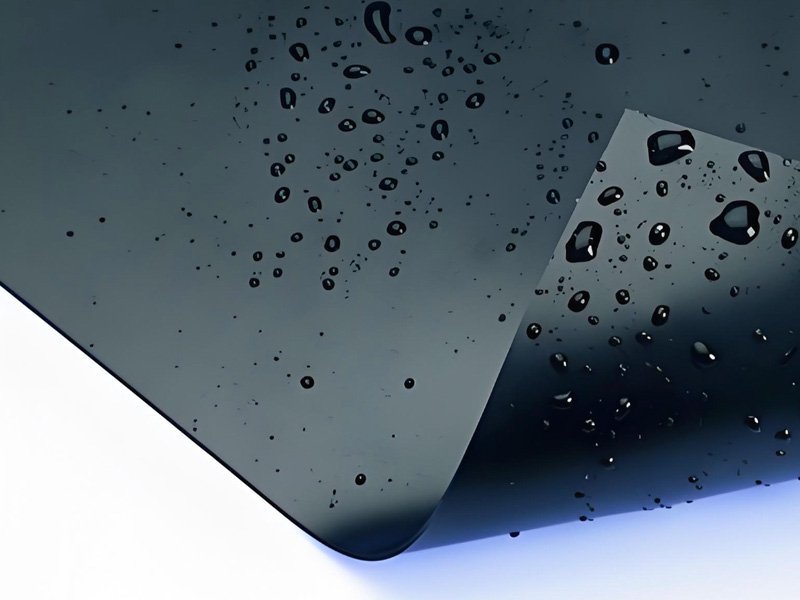
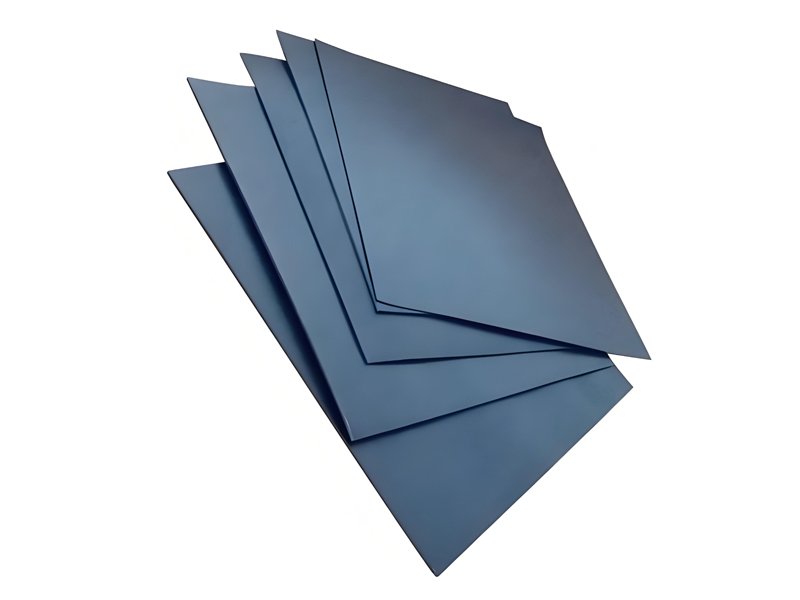
| PROPERTIES | Test method | Unit | BPM50 | BPM75 | BPM100 | BPM150 | BPM200 | BPM250 |
| Thickness (minimum average) | ASTM D 5199 | millimeters | 0.5 | 0.75 | 1 | 1.5 | 2 | 2.5 |
| Thickness (lowest individual reading) | ASTM D 5199 | millimeters | 0.45 | 0.67 | 0.9 | 1.35 | 1.8 | 23 |
| Density (min.) | ASTM D 1505 | g/cm3 | 0.92 | 0.92 | 0.92 | 0.92 | 0.92 | 0.92 |
| Tensile properties (minimum average) | ASTM D 6693 | |||||||
| Strength at rest | kN/m | 14 | 20 | 27 | 40 | 55 | 66 | |
| Elongation at break | % | 800 | 800 | 800 | 800 | 800 | 800 | |
| Tear resistance (minimum average) | ASTM D 1004 | north | 50 | 70 | 100 | 150 | 200 | 250 |
| Puncture resistance (minimum average) | ASTM D 4833 | north | 120 | 190 | 250 | 370 | 500 | 620 |
| Carbon black content (minimum average) | ASTM D 1603 | % | 2 | 2 | 2 | 2 | 2 | 2 |
| Carbon black dispersion (minimum average) | ASTM D 5596 | Cat. 2 | Cat. 2 | Cat. 2 | Cat. 2 | Cat. 2 | Cat. 2 | Cat. 2 |
| Brittleness at low temperatures | ASTM D 746 | C | < -77 | < -77 | < -77 | < -77 | < -77 | < -77 |
| Oxidative induction time (OIT) (minimum average) | ASTM D 3895 | minutes | 100 | 100 | 100 | 100 | 100 | 100 |
| Melt flow index (190 °C, 2.16 kg) | ASTM D 1238 | grams/10 minutes | < 1.0 | < 1.0 | < 1.0 | < 1.0 | < 1.0 | < 1.0 |
| 2% module | ASTM D 5323 | kN/m | 210 | 370 | 420 | 630 | 840 | 1050 |
| Dimensional stability (100˚C, 1 hour) | ASTM D 1204 | % | ± 1 | ± 1 | ± 1 | ± 1 | ± 1 | ± 1 |
| Axisymmetric rupture deformation | ASTM D 5617 | % | 56 | 56 | 56 | 56 | 56 | 56 |
| Brittleness at low temperatures | ASTM D 746 | C | < – 77 | < -77 | < -77 | < -77 | < -77 | < -77 |
LLDPE Geomembranes are engineered to deliver a unique combination of flexibility, strength, and ease of installation. Below are the key features that make them a standout choice for containment projects, based on insights from Titan Environmental, Environmental Protection Inc., and GeoSolutions Inc.
The hallmark of LLDPE Geomembranes is their superior flexibility, with elongation capacities up to 800% per GRI-GM17 standards. This allows them to conform to uneven surfaces, such as rocky terrains or curved pond bases, reducing the risk of punctures during installation.
Despite their flexibility, LLDPE Geomembranes offer robust tensile strength and tear resistance, making them suitable for applications with moderate mechanical stress, such as landfill caps or irrigation reservoirs.
LLDPE Geomembranes can be extrusion or wedge welded, enabling secure seams that maintain impermeability. Factory-prefabricated panels, as highlighted by Titan Environmental, further streamline installation by reducing on-site seaming.
Unlike some geomembranes that become brittle in cold climates, LLDPE Geomembranes maintain flexibility down to -40°C, making them ideal for projects in frigid environments, such as mining ponds in northern regions.
Incorporating UV stabilizers and antioxidants, LLDPE Geomembranes resist degradation from sunlight and moderate chemical exposure, ensuring durability in outdoor or mildly aggressive environments.
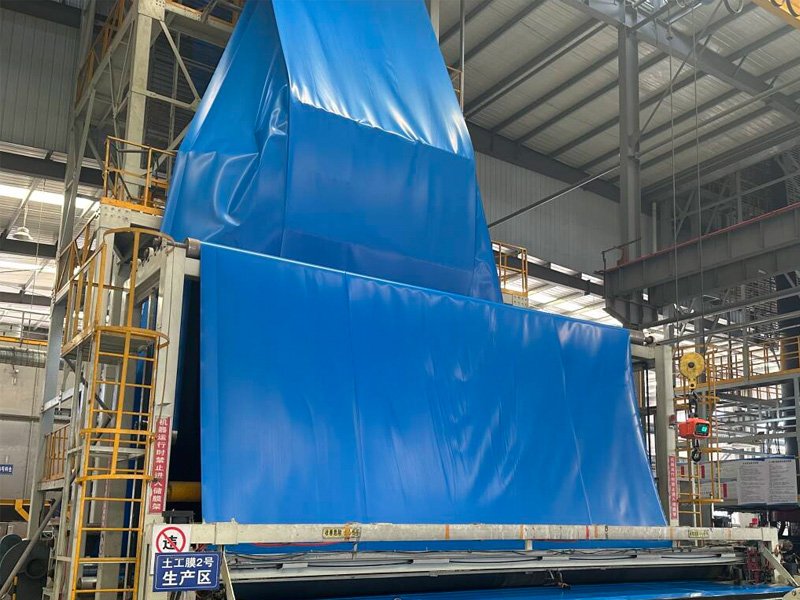
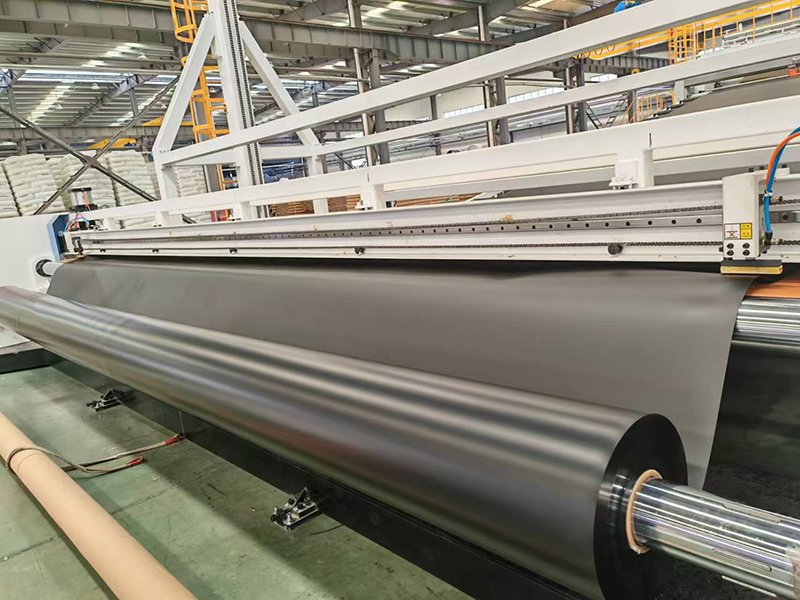
LLDPE Geomembranes offer a range of benefits that make them a preferred choice for diverse containment projects. Drawing from sources like GeoSolutions Inc. and Environmental Protection Inc., here are the primary advantages:
The high flexibility of LLDPE Geomembranes simplifies installation on complex or uneven surfaces, reducing the need for extensive site preparation. This can cut installation time by up to 20% compared to stiffer materials like HDPE.
LLDPE Geomembranes are generally 10-20% cheaper than HDPE Geomembranes, as noted by industry sources. Their ease of installation and prefabrication options further reduce labor costs, with savings of approximately $0.20 per square meter.
With resistance to UV exposure, low temperatures, and moderate chemical degradation, LLDPE Geomembranes provide reliable performance in harsh environments. Their expected lifespan often exceeds 50 years, outlasting traditional clay liners by 25%.
LLDPE Geomembranes offer a permeability rate of less than 10⁻¹⁷ cm/s, blocking 99.9% of contaminants. This makes them critical for preventing soil and groundwater contamination in applications like landfills and wastewater ponds.
Available in smooth or textured surfaces, LLDPE Geomembranes adapt to a wide range of projects, from -40°C mining ponds to 50°C desert reservoirs. They can also be customized in various colors and thicknesses to meet aesthetic or functional requirements.
Prefabricated LLDPE Geomembrane panels eliminate on-site seaming, reducing installation time by up to 30%, as emphasized by Titan Environmental. Their lightweight nature and weldability further streamline deployment, saving 15% in labor costs.
Choosing between HDPE and LLDPE Geomembrane depends on project requirements, as both materials offer distinct advantages. Below is a detailed comparison to help determine the best option, based on insights from GeoSolutions Inc. and Environmental Protection Inc.
Neither material is inherently “better”; the choice depends on specific project needs. Consulting with Geomembrane Manufacturers can provide tailored recommendations to ensure optimal performance and cost-efficiency.
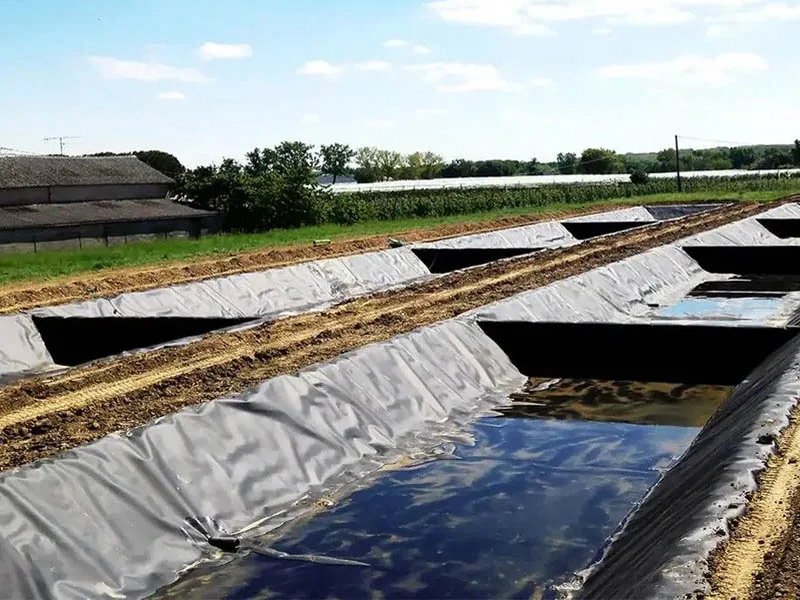
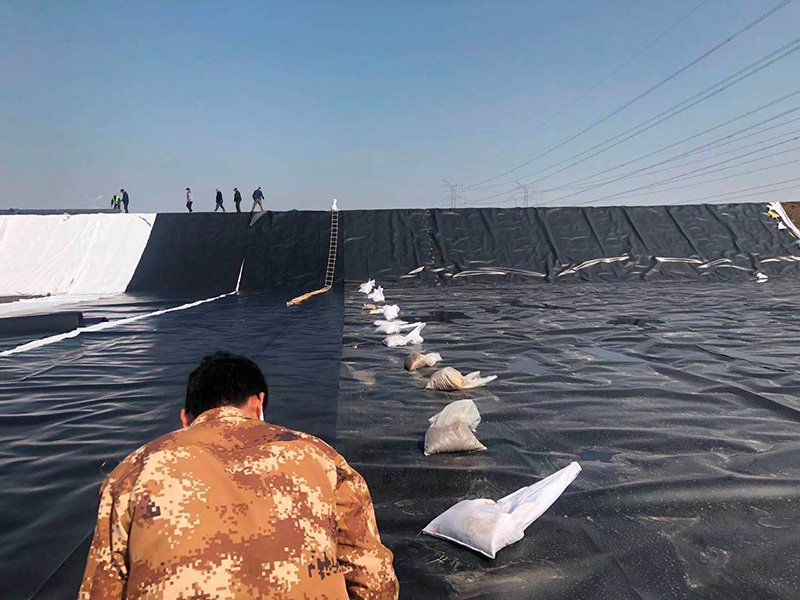
LLDPE Geomembranes are versatile liners used across multiple industries due to their flexibility, durability, and impermeability.
LLDPE geomembranes are particularly valued for their ability to conform to complex geometries and withstand differential settlement, making them ideal for projects with unique challenges.
BPM Geosynthetics is a global leader and manufacturer of geosynthetics engineered specifically for your environmental, civil engineering and mining applications. BPM offers complete range of best quality geosynthetic products at competitive factory price on fast delivery.
We are at your service in 24 hours/7 days. Any questions or inquiries, please contact us.
When you’re looking for geosynthetic products or services, we are always here repond to your quote as soon as possible.